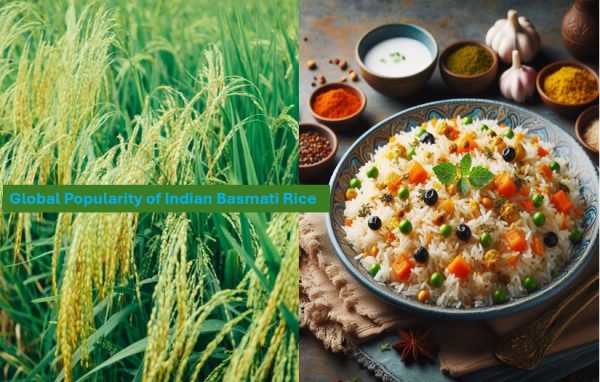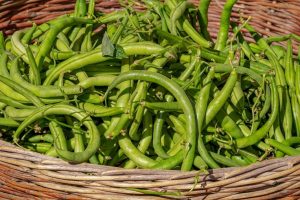
Reasons For Global Popularity Of Basmati Rice
One of the most popular rice variety that you taste not just in Indian cuisines also in International cuisines is India’s Basmati rice. The fragrant Basmati rice has a rich history, deeply intertwined with the culture and agriculture of the Indian subcontinent. Its origins and the reasons for its global popularity offer fascinating insights into the culinary and cultural importance of this grain.
Origin of Basmati Rice
- Geographical Roots:
- Indian subcontinent: Basmati rice originates from the Indian subcontinent, primarily in the fertile plains of northern India and Pakistan. The word “Basmati” derived from the Sanskrit word “Vasmati,” meaning “fragrant” or “aromatic.” It has been cultivated in these regions for thousands of years, particularly in the Himalayan foothills, where the climate and soil conditions are ideal for its growth.
- Historical cultivation: There is evidence that Basmati rice was grown as early as the 12th century in the Indo-Gangetic plains, although its exact date of origin is debated. Over time, the cultivation and use of Basmati rice became integral to the culture and cuisine of the region.
- Cultural Significance:
- Integral to Indian cuisine: In Indian cultures, Basmati rice has long been associated with special occasions, weddings, and festivals due to its premium quality. It is traditionally used in dishes like biryani, pulao, and khichdi, which are central to regional culinary traditions.
- Royal and noble use: Historically, Basmati rice was considered a luxury food, often served in royal courts, and used in elaborate dishes that reflected its status as a premium grain.
Reasons for Global popularity of Basmati rice
- Increased exportation:
- Global demand: India and Pakistan are the world’s largest exporters of Basmati rice, and its global popularity surged in the mid-to-late 20th century, when it began exported to Europe, the Middle East, and North America. Its distinctive aroma, long grains, and delicate texture quickly made it a favorite in international cuisines.
- Western popularity: In Western countries, Basmati rice has become popular for its versatility in both traditional Asian dishes and more modern, fusion recipes. It is commonly found in supermarkets around the world.
- Health and nutrition trends:
- Perceived health benefits: The rise of health-conscious eating has also contributed to the popularity of Basmati rice. Its low Glycemic Index (compared to other rice varieties) makes it a popular choice for those seeking to manage blood sugar levels, and it is often marketed as a healthier alternative to standard white rice.
- Gluten-free diets: As more people adopt gluten-free diets, Basmati rice is naturally gluten-free, making it a good option for people with gluten sensitivities or celiac disease. It also contains essential nutrients like B vitamins, fiber, and minerals such as magnesium.
- Culinary versatility:
- Adopted by international cuisines: Basmati rice’s adaptability to various dishes has further fueled its popularity. It is now used not only in South Asian and Middle Eastern cooking but also in Mediterranean, European, and American dishes. Its light and fluffy texture makes it an ideal complement to a wide range of flavors, from spicy curries to grilled meats.
- Aesthetic appeal: elegant appearance- The long, slender grains of Basmati rice give dishes a refined and elegant presentation, which has contributed to its popularity in restaurants and home cooking.
- Cultural diffusion:
- Integration into global cuisine: Indian and Pakistani diasporas around the world have helped spread the use of Basmati rice. Restaurants serving Indian food often use Basmati rice as a staple, introducing it to new audiences. As Indian cuisine gained international acclaim, so did Basmati rice.
- Aromatic flavor: Unique aroma: Basmati rice is known for its distinct nutty aroma, which is often described as popcorn-like. This aroma is a result of the high concentration of a compound called 2-acetyl-1-pyrroline, which gives Basmati rice its signature fragrance. Delicate Flavor: Its mild, slightly nutty taste makes it a versatile ingredient for a variety of cuisines.
- Long, Fluffy Grains: Texture: Basmati rice grains are longer and thinner than most other rice varieties. When cooked, the grains remain separate and fluffy rather than sticking together. This makes it ideal for dishes like pilafs, biryanis, and side servings.
Current Status -Geographical Indication (GI) status: Basmati rice has been granted Geographical Indication (GI) status by both India and Pakistan, recognizing its unique qualities tied to its place of origin. This status helps protect the rice’s heritage and ensures that only rice grown in specific regions can be labeled as “Basmati.”
Basmati rice has gone from a regional specialty to a globally recognized and beloved grain, revered for its unique qualities and rich history. Its continued popularity can be attributed to its flavor, texture, cultural significance, and adaptability to a wide range of cuisines.
References:
https://www.healthline.com/nutrition/is-basmati-rice-healthy
Image credit: Photo by Sergei A: https://www.pexels.com/photo/close-up-photo-of-rice-plains-2589457/ (Free to use) & Pulav dish AI ∙ August 25, 2024 at 7:30 PM
Author: Sumana Rao | Posted on: August 26, 2024
« Impact of AI in Agricultural Industry And Challenges Hydroponics Cultivation -Growing Herbs And Vegetables Without Soil »






















Write a comment